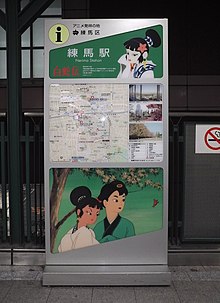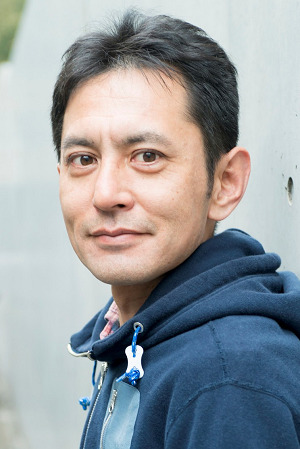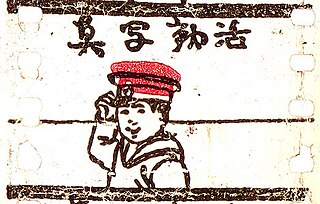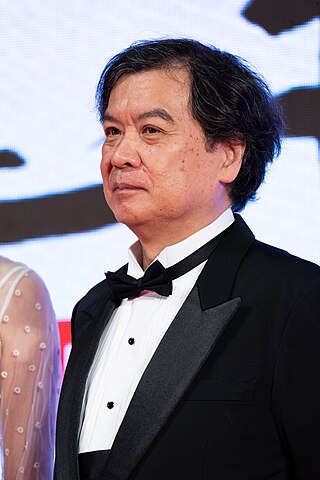This article needs additional citations for verification .(May 2017) |
This is a list of anime by release date which covers Japanese animated productions that were made between 1946 and 1959. After World War II, Japan was occupied by the allies which mainly consisted of the Americans. [1] During the shift from the Empire of Japan to a democracy, the animation industry continued producing new animated films. The first anime broadcast on TV did not come though until 1958 when Mole's Adventure was released. This marked two major milestones as it was also the first ever color animation in the country. The first full-length color animation was also released in 1958 with the title The Tale of the White Serpent, in America it was also known as Panda and the Magic Serpent. Animated television series were later released in the 1960s which include Astro Boy, the first major successful anime.
Contents

| English Name | Japanese Name | Romaji | Format | Original Release Date |
|---|---|---|---|---|
| Spider Thread (Spider Silk) | 蜘蛛の糸(蜘蛛の絲) | Kumonoito | Short film | 1946 [2] |
| Cherry Blossom: Spring's Fantasy | 桜 - 春の幻想 | Sakura: Haru no Gensou | Short film | 1946 [3] |
| The Magic Pen | 魔法のペン | Mahou no Pen | Short film | 1946 [4] |
| Abandoned Cat Little Tora | すて猫トラちゃん | Suteneko Tora-chan | Short film | 1947 [5] |
| Snowy Nights Dream | 雪の夜の夢 | Yukinoyonoyume | Short film | 1947 [6] |
| Story of the Muku Tree | ムクの木の話 | Muku no ki no hanashi | Short film | 1947 [7] |
| The Coconut | 椰子の実 | Yashi no mi | Short film | 1947 [8] |
| The Little Match Girl | マッチ賣りの少女 | Matchi uri no Shoujo | Short film | 1947 [9] |
| Trouble in the Forest | – | Niwatori to Tomodachi | Short film | 1947 [4] |
| A Turtle in the Pot | 甕中捉龞 | – | Short film | 1948 [10] |
| Carry the Hatchet | 鉞担いで | Masakari katsuide | Short film | 1948 [4] |
| Poppoya: Carefree Stationmaster | – | Poppoya-san: Nonki Ekicho no Maki | Short film | 1948 [11] [12] |
| Princess of Baghdad | バグダッド姫 | Bagudaddo-hime | Short film | 1948 [4] |
| The Bear Dodger | 熊に喰われぬ男 | Kuma ni Kuwarenu Otoko | Short film | 1948 [13] |
| Tora-chan and the Bride | トラちゃんと花嫁 | Tora-chan to Hanayome | Short film | 1948 [14] |
| Animal Baseball Match | 動物大野球戦 | Dobutsu Daiyakyu-sen | Short film | 1949 [4] |
| Gauche the Cellist | セロひきのゴーシュ | Sero Hiki no Gōshu | Short film | 1949 [15] |
| The King's Tail | 王様のしっぽ | Ousama no Shippo | Short film | 1949 [16] |
| Gulliver's Great Activities | ガリヴァー奮闘記 | Gulliver Funtouki | Short film | 1950 [13] |
| Thank You, Kitty | ありがとう、キティ | Arigatō, Kiti | Short film | 1950 [17] |
| Tora-chan and the Insect | トラちゃんのカンカン虫 | Tora-chan no Kankan Mushi | Short film | 1950 [18] |
| Adam and Eve | アダムとイブ | Adam to Eve | Short film | 1951 [19] |
| Ponsuke no Udekurabe | ポン助の腕くらべ | Ponsuke no Udekurabe | Short film | 1951 [20] |
| Detective of the Ball | 団子兵衛捕物帖 開けーごまの巻 | Dangobetori monocho hirakegoma no maki | Short film | 1952 [21] |
| The Whale | くじら | Kujira | Short film | 1952 [4] |
| The Forest Concert | 森の音楽会 | Mori no Ongakukai | Short film | 1953 [22] |
| The Flower and the Butterfly | 花と蝶 | Hana to Chou | Short film | 1954 [4] |
| Kojiki Excerpts of the Iwato Open | 古事記抄 天の岩戸開きの巻 | Kojiki sho: Amano iwato-biraki no maki | Short film | 1955 [23] |
| Piggyback Ghost | おんぶおばけ | Onbu Obake | Short film | 1955 [24] |
| The One-Legged Cricket | 一本足のきりぎりす | Ippon Ashi no Kirigirisu | Short film | 1955 [25] |
| Beer Those Were the Days | – | Biru mukashi mukashi | Short film | 1956 [10] |
| The Black Woodcutter and the White Woodcutter | 黒いきこりと白いきこり | Kuroi Kikori to Shiroi Kikori | Short film | 1956 [26] |
| Five Little Monkeys | 五匹の子猿たち | Gohiki no kozaru-tachi | Short film | 1956 [10] |
| Ghost Ship | 幽霊船 | Yuurei-sen | Short film | 1956 [4] |
| Sambo's Tiger Conquest | ちびくろさんぼのとらたいじ | Chibikuro Sambo no tora taiji | Short film | 1956 [10] |
| The Legend of the Dragon | 古事記物語 第貮篇 八岐大蛇退治 | Kojiki monogatari dai nihen: Yamatano-orochi taiji | Short film | 1956 [27] |
| The Melon Princess and the Amanojaku | 瓜子姫とあまのじゃく | Uriko Hime to Amanojaku | Short film | 1956 [10] |
| Fukusuke | ふくすけ | Fukusuke | Short film | 1957 [28] |
| Kitten's Scribbling / Kitty's Graffiti | こねこのらくがき | Koneko no Rakugaki | Short film | 1957 [29] |
| The Magic Drum | ふしぎな太鼓 | Fushigi na Daiko | Short film | 1957 [10] |
| Korochan, the Little Bear | こぐまのコロちゃん | Koguma no Koro-chan | Short film | 1958 [30] |
| Mole's Adventure | もぐらのアバンチュール | Mogura no Adventure | TV film | 1958 [31] |
| The White Snake Enchantress | 白蛇伝 | Hakujaden | Feature film | 1958 [32] |
| Kitty's Studio | こねこのスタジオ | Koneko no Studio | Short film | 1959 [33] |
| Magic Boy | 少年猿飛佐助 | Shounen Sarutobi Sasuke | Feature film | 1959 [34] |
| The Sparrow in the Empty Pumpkin | ひょうたんすずめ | Hyoutan Suzume | Short film | 1959 [35] |














